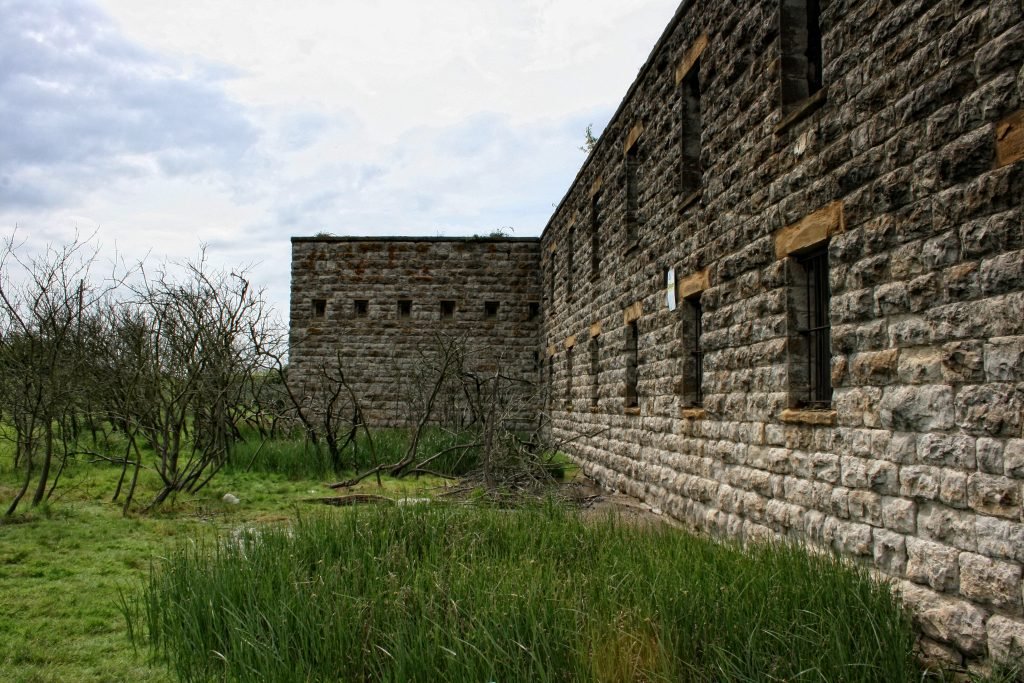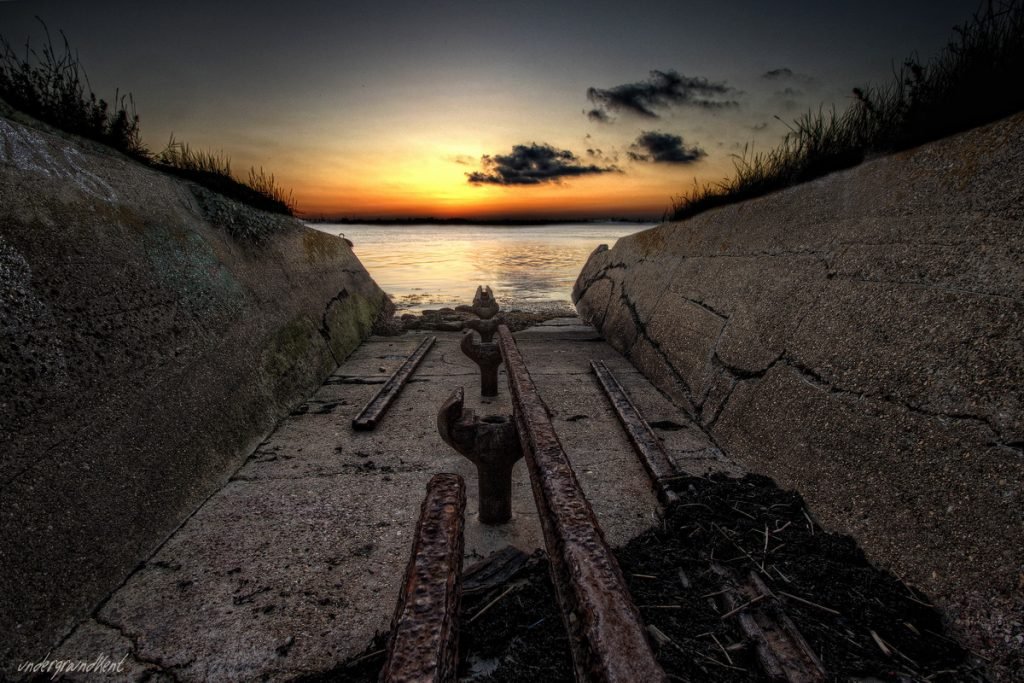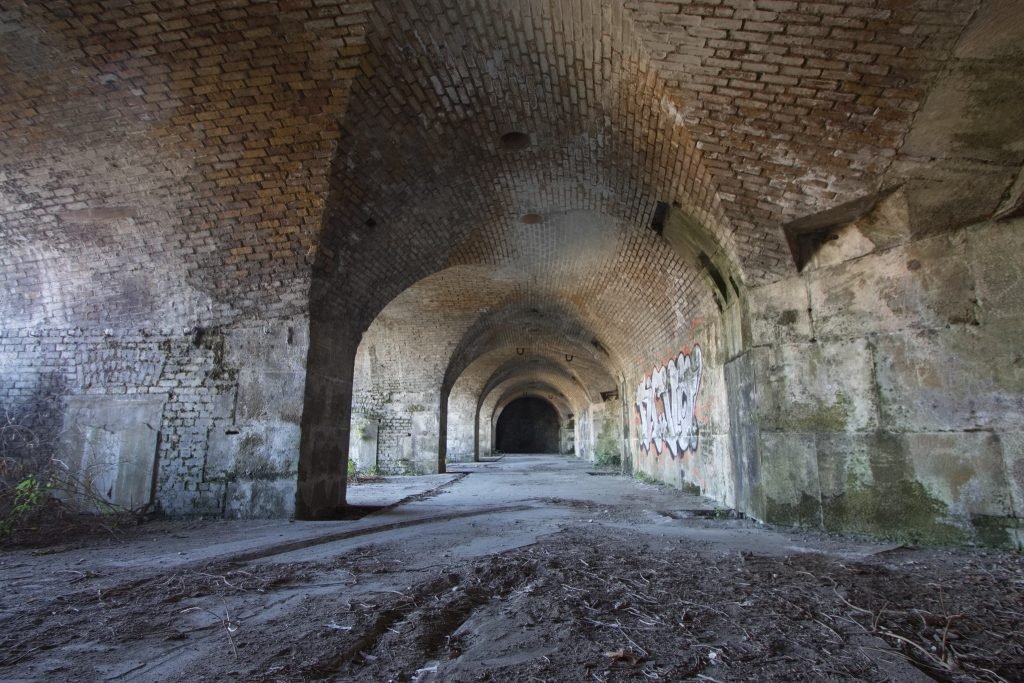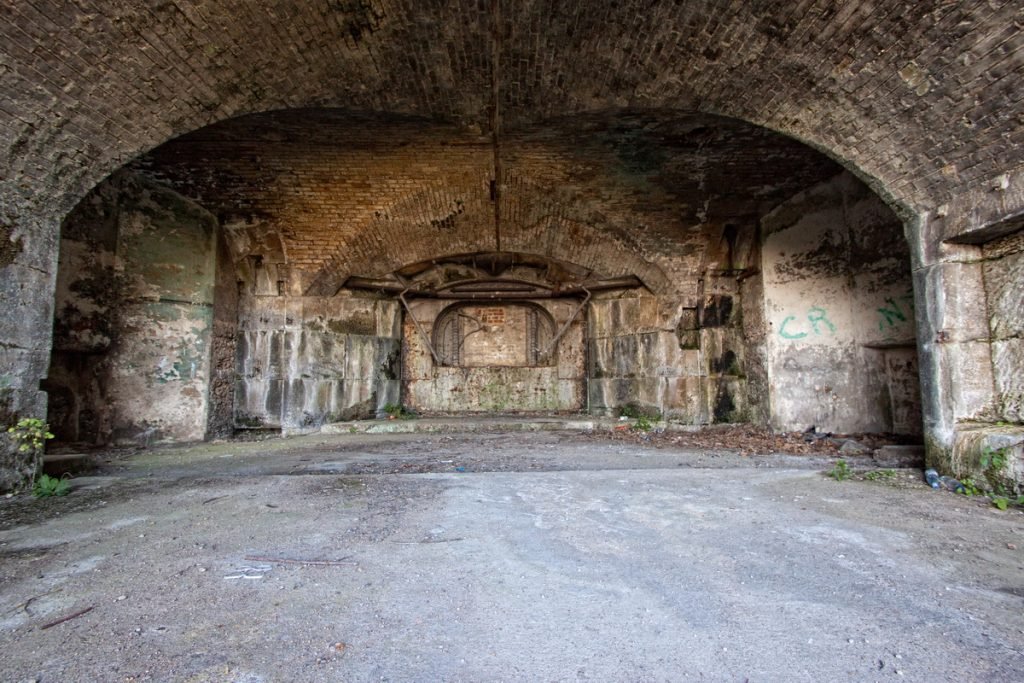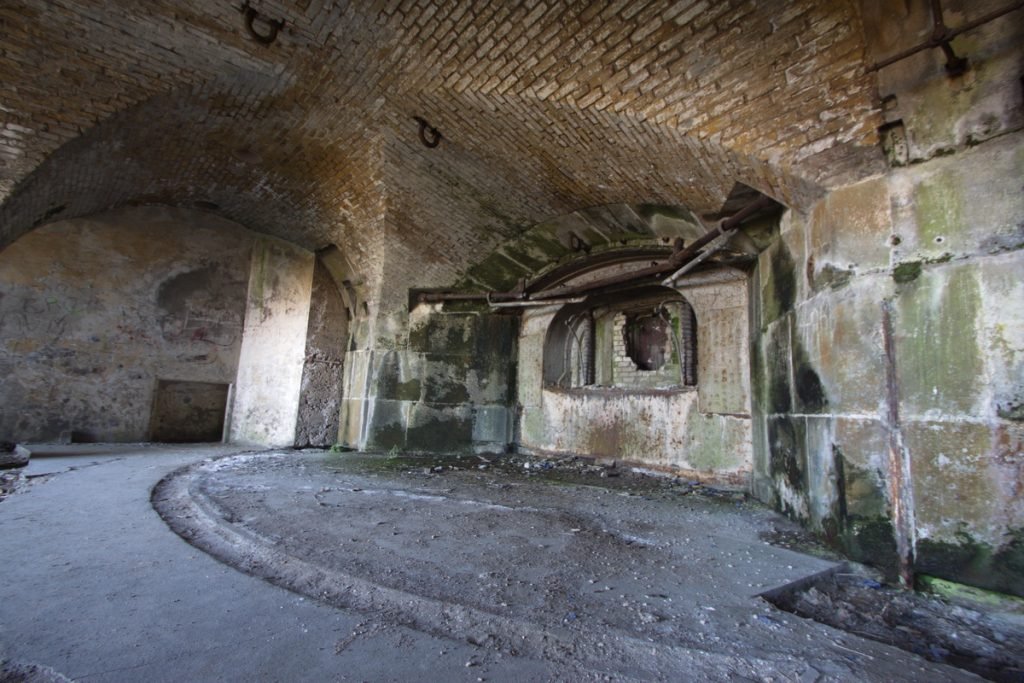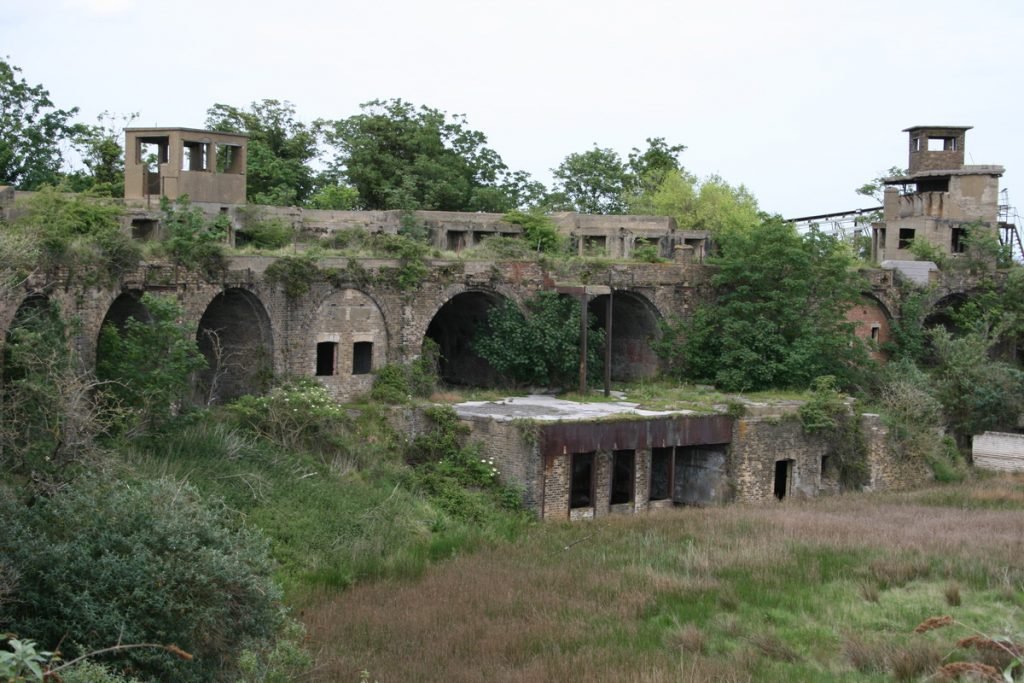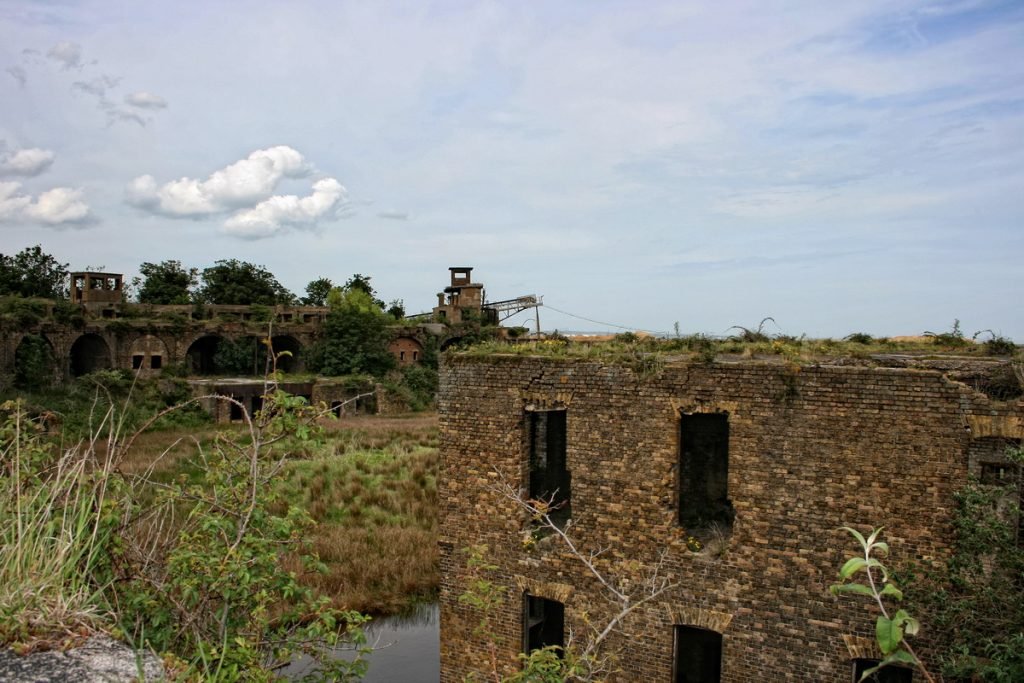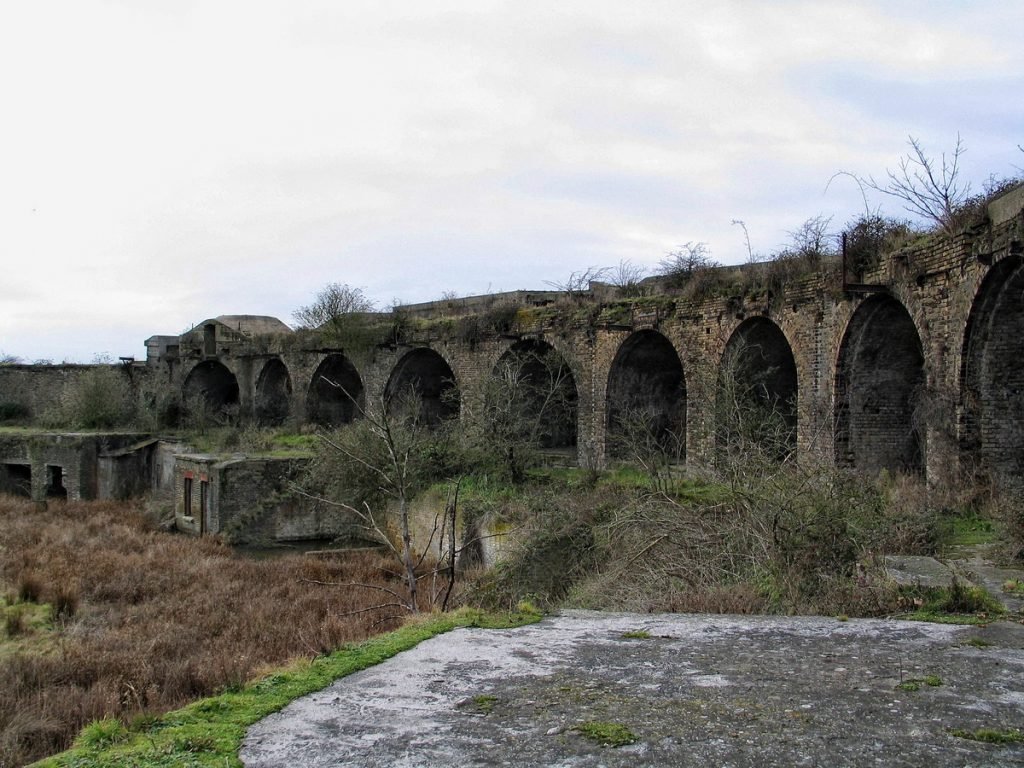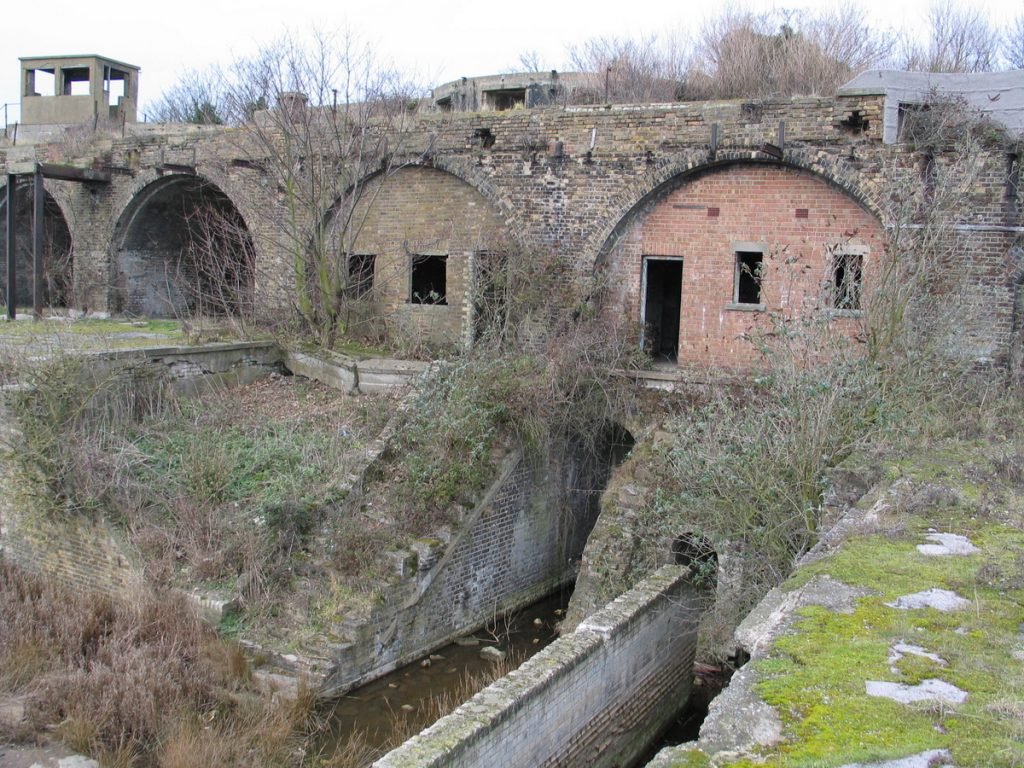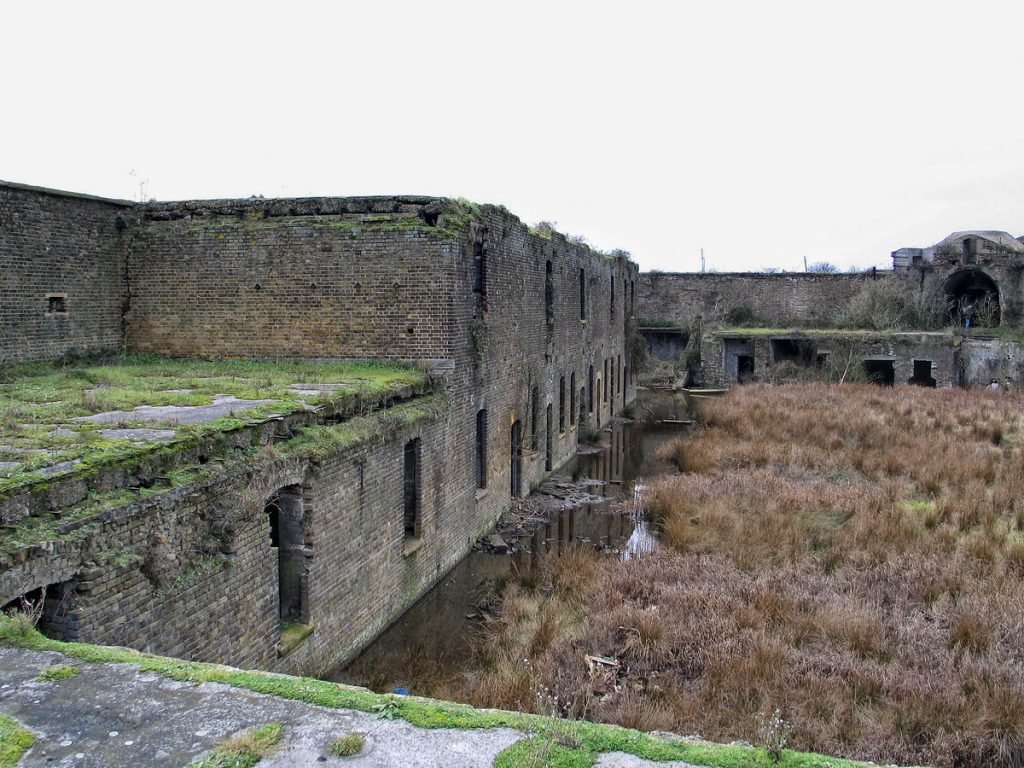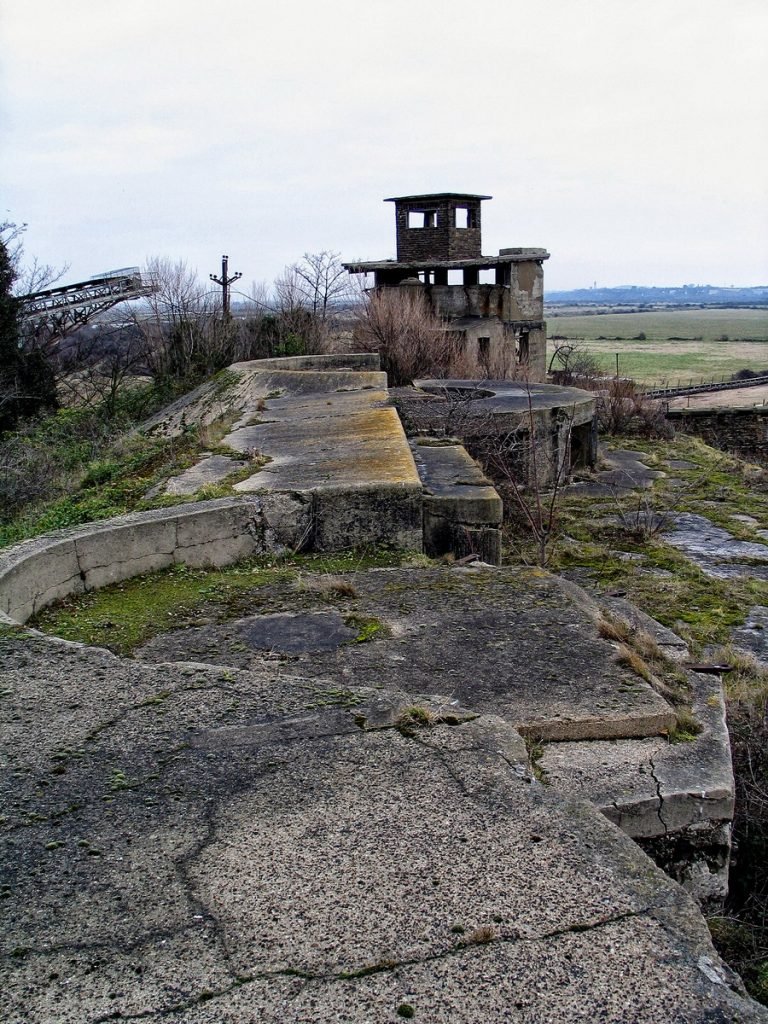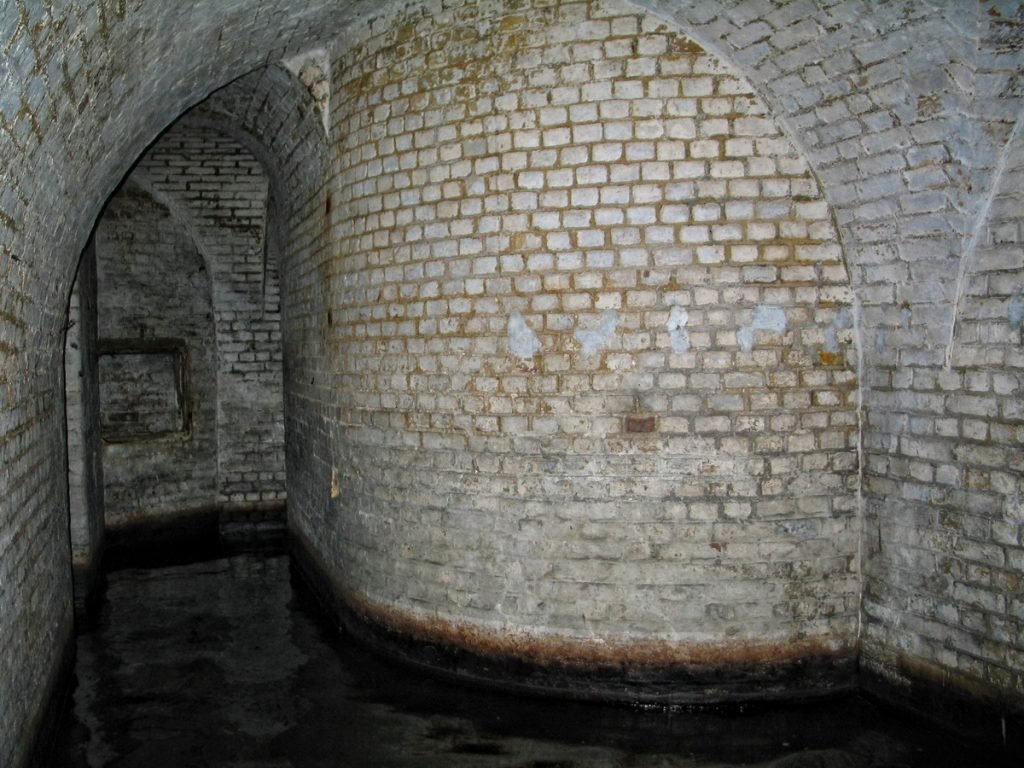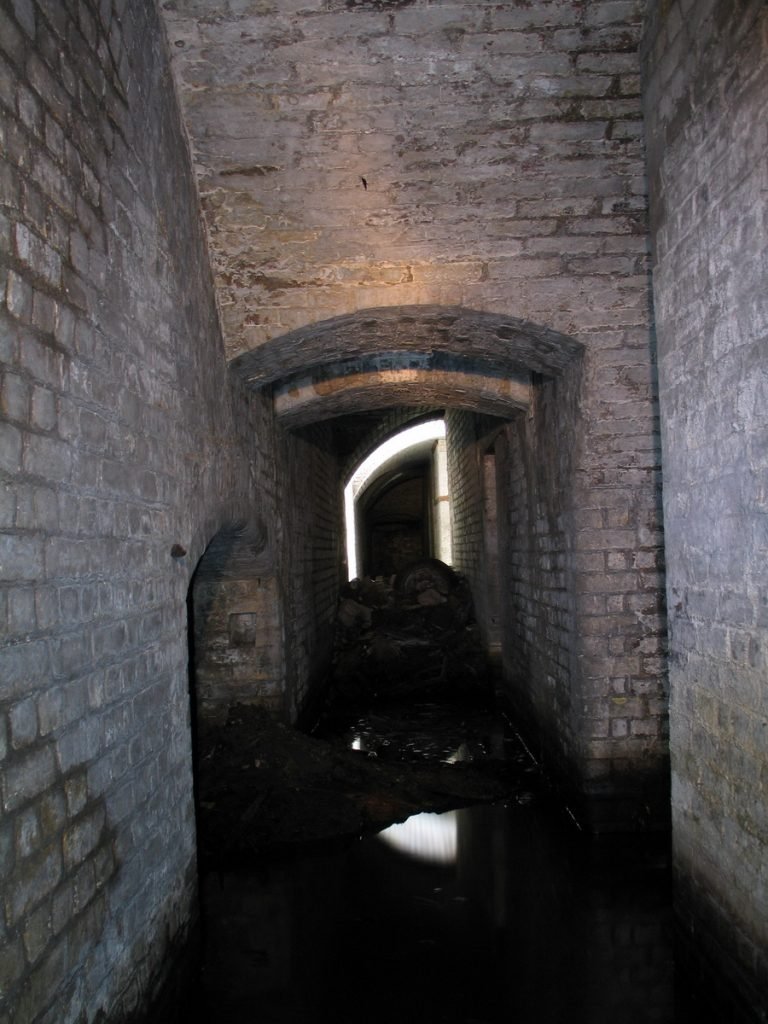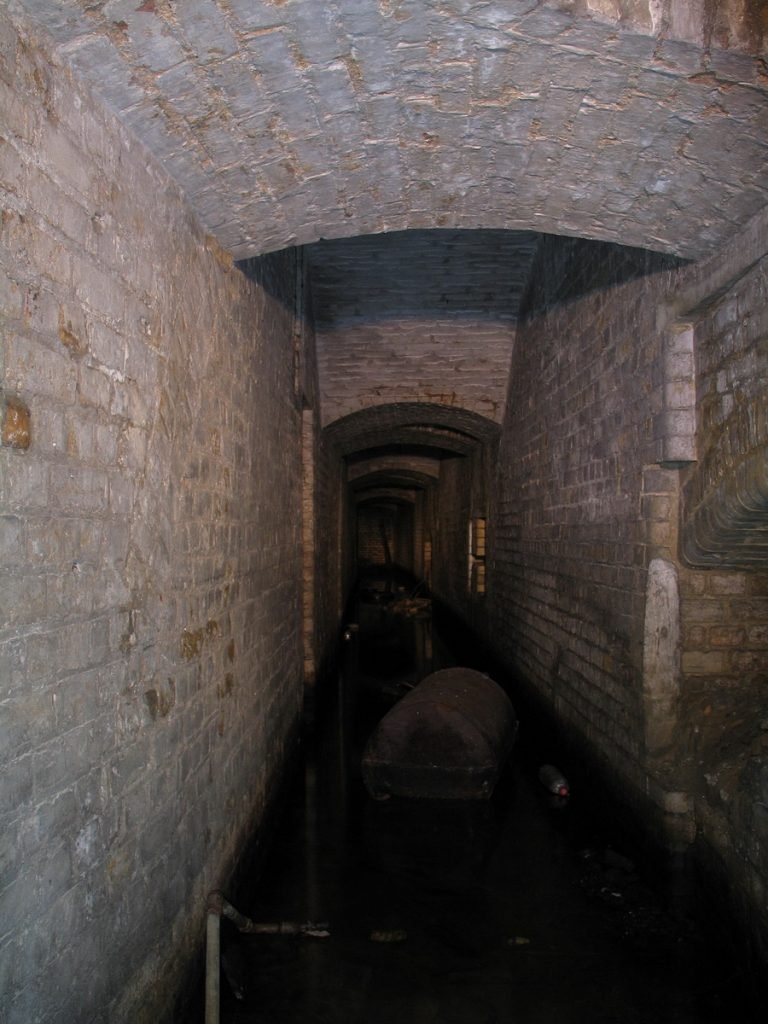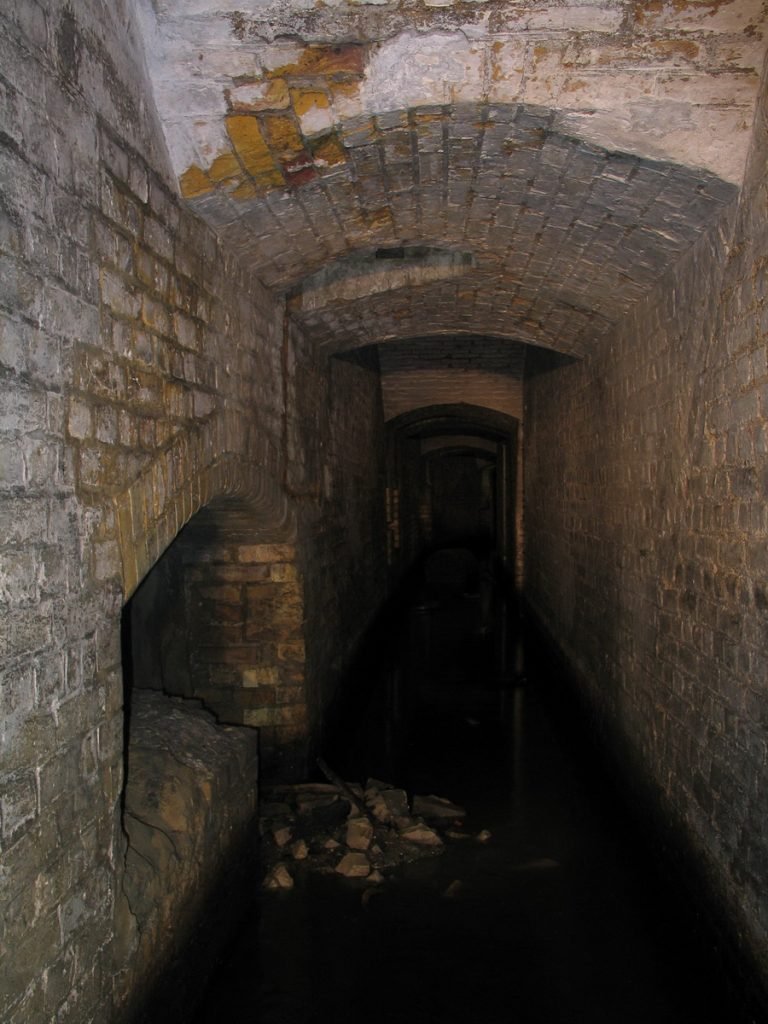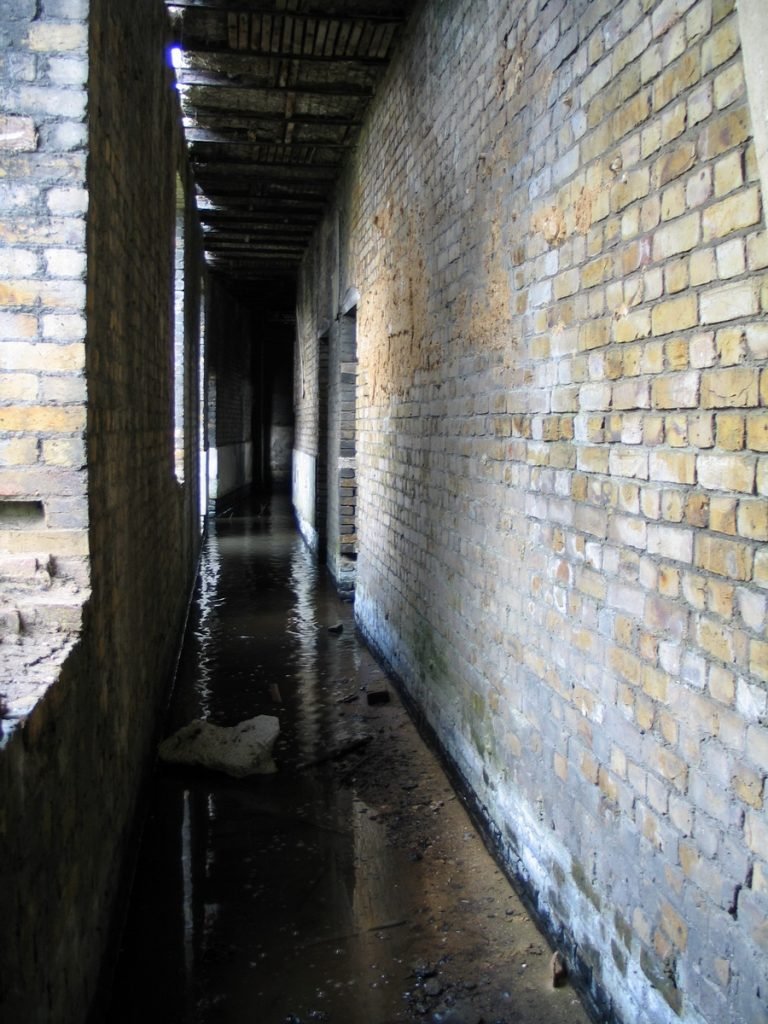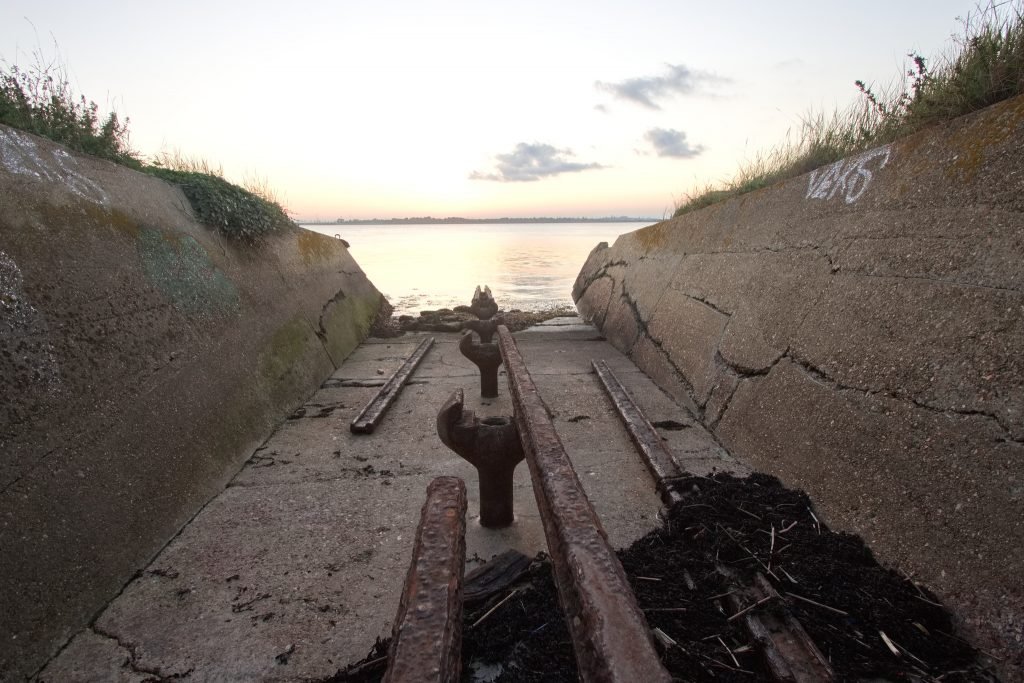Cliffe Fort
Built in the 1860’s, Cliffe Fort is one of the three Thames Side Forts that were designed to defend that Thames Estuary. It was also built to work in conjunction with Coalhouse Fort in Essex to prevent a hostile fleet reaching London via the Thames.
Construction of the fort was difficult due to the marshy ground that the fort is built on; cracking and subsidence caused many problems for the men working on the fort. More surprisingly, this marshy ground was also home to malaria mosquitoes, which made life even more difficult for the construction work.
The fort was designed solely to cater for the armament of the day and the guns that were installed on Cliffe Fort were 12.5” and 11” RML’s, weighing around 35 tons. Protection of these guns was provided by granite-faced casemates with shields for added defence. These shields, casemates and the rails on which the gun carriages stood are all still visible today.
In 1885, Cliffe Fort became the site for an experimental harbour defence system known as the “Brennan Torpedo”. This was the world’s first wire-guided missile. Originally there were two sets of launching rails, but only one remains today. As progressive as this system was at the time, it was replaced 25 years later in favour of quick-firing (QF) guns.
Cliffe Fort remained armed throughout both World Wars but was sold after the end of the Second World War to a local cement company. As a result of this, the fort has sadly been neglected and has fallen into a fairly advanced state of decay.
Plan
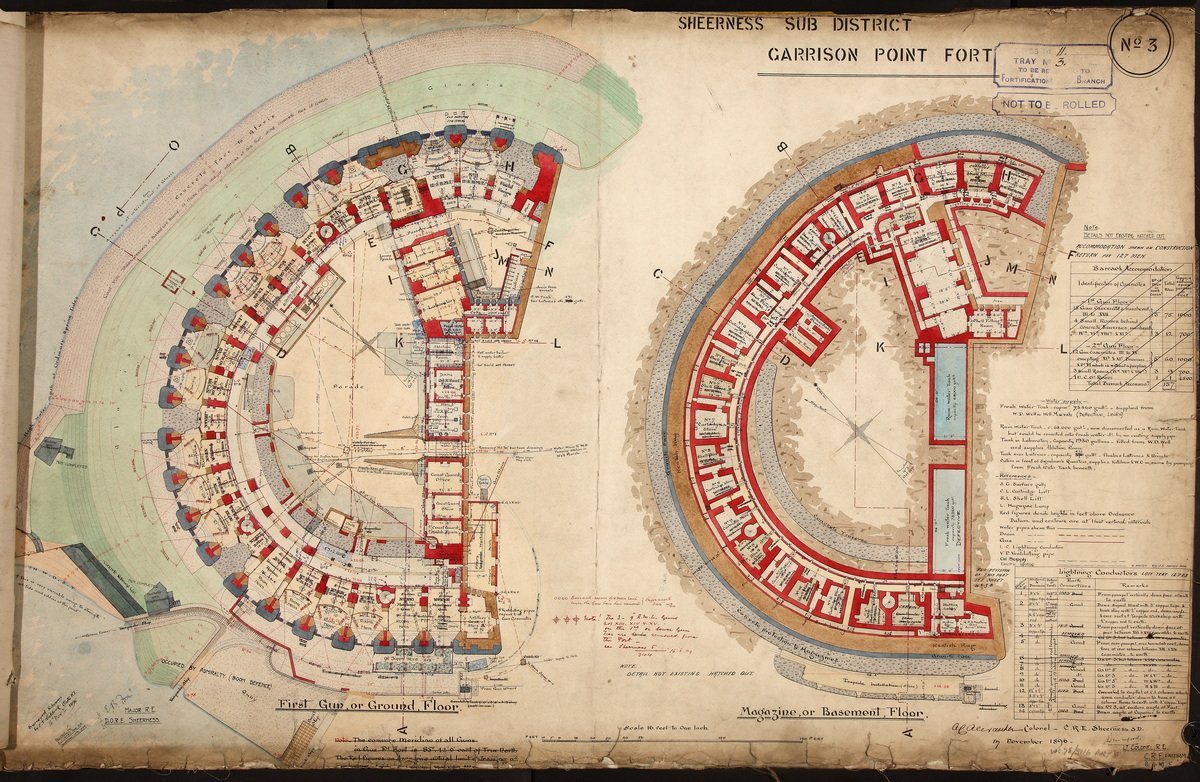
Location: Isle of Grain
Condition: Very Poor
Date Of Visit: 26/12/06
